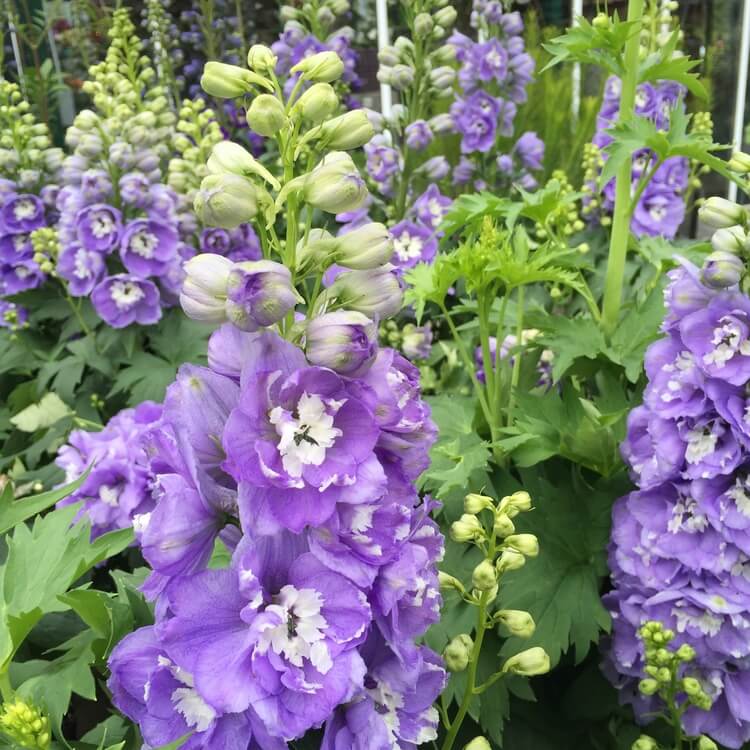
Celebrate Pollinator Week by planting flowers for birds and bees. Delphinium’s tall spires attract hummingbirds. Swansons Nursery photo.
Next week, June 17-23, is Pollinator Week. Join others to celebrate pollinators in this annual national event.
We love pollinators because they help flowers bloom and crops grow. Pollinators include bees, moths, wasps, butterflies, many insects and even bats. A third of the food we eat depends on pollinators. And 90 percent of all wild plants and trees rely on pollinators.
Many species of bees and other pollinators are declining in great numbers. There are many threats, including loss of habitat, pesticides, mites, diseases and more.
Plants for pollinators
A great way to celebrate is to add pollinator habitat in your own landscape. Swansons Nursery has a list of seven favorite perennials to attract pollinators:
- Delphinium has tall spires of blue, lavender, red, pink, purple, or white flowers that attract hummingbirds.
- Yarrow (achillea) is a long bloomer that makes excellent cut flowers. It attracts bees, butterflies and other beneficial insects.
- Penstemon attracts bumblebees, hummingbirds, and butterflies. It is available in a variety of colors and sizes and is an excellent cut flower.
- Hardy fuschia has long, tubular flowers that are a big draw for hummingbirds. Most varieties bloom for months.
- Bee balm (Monarda didyma) has frilly flowers that attract bees, butterflies, and hummingbirds.
- Catmint (Nepeta) is a relative of catnip and a member of the mint family. Its loose spikes of lavender (or white or pink) flowers attract bees.
- Joe Pye weed (Eupatorium pupureum) is loved by butterflies. It grows six to eight feet tall!
Here are more lists of plants that attract pollinators.
- Xerces Society: Pollinator Plants for the Maritime Northwest
- Pollinator Partnership: Pacific Lowland Regional Guide
- Great Plant Picks: Plants for Bees
- Great Plant Picks: Plants for Butterflies
- Great Plant Picks: Plants for Hummingbirds
Get more involved in saving pollinators
If you would like to do more outside of your own yard to help pollinators, consider these options.
Pacific Northwest Bumble Bee Atlas. Attend a training and help collect critical information on our native bumble bees. This citizen science project seeks a better understanding of where these animals are living. This will help with efforts to conserve them and to protect habitat in the best places.
Pollinator Protection Pledge. Join 8,000+ people who have already signed a pledge to protect pollinators. Pledge to plant bee-friendly flowers and take other steps.
Bee City USA. Mobilize your local community to raise awareness about pollinators. The goal is to pass a resolution committing to actions to protect and enhance pollinator habitat.
Find out more
- Pollinator Partnership, sponsor of Pollinator Week
- Xerces Society, protecting invertebrates and their habitats
- USDA Forest Service pollinator info
- US Fish and Wildlife Service pollinator page
- National Wildlife Federation
